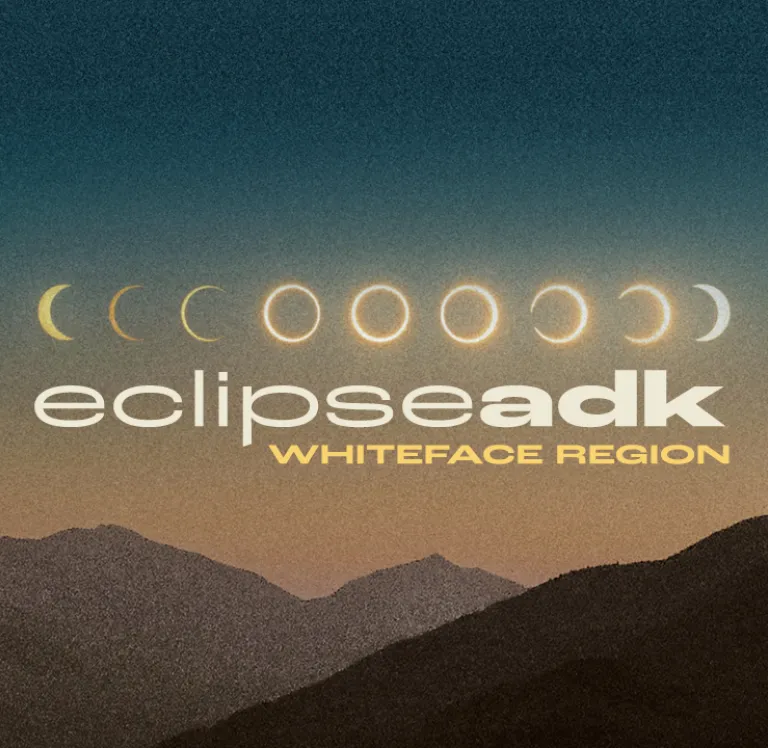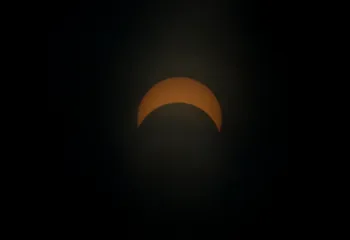Solar Eclipse 2024
On April 8, 2024, a rare total solar eclipse will cast its shadow over the Whiteface Region! The next time it'll happen in the Adirondacks? 375 years from now. The Whiteface Region stands out as an exceptional place to witness the eclipse. Our communities are at the base of Whiteface Mountain, site of two Olympics games, making the region a remarkably unique viewing location for the eclipse, especially with all of the exciting events planned.
When will the eclipse begin?
Each of the four hamlets of the Whiteface Region are within the path of totality for the eclipse. In the Whiteface region, the eclipse will begin at 2:13 p.m., with totality beginning at 3:25 p.m. The duration of totality of the eclipse will vary slightly in each hamlet:
- In Au Sable Forks, totality will last for 3 minutes and 25 seconds.
- In Jay, totality will last for 3 minutes and 21.9 seconds.
- In Upper Jay, totality will last for 3 minutes and 19.8 seconds.
- In Wilmington, totality will last for 3 minutes and 25.4 seconds.
Get your eclipse glasses
Enjoy viewing the solar eclipse safely with proper eye protection! Solar eclipse glasses are special viewing glasses that allow you to look at the sun directly. While some events will have glasses available on April 8, it's best to come prepared with your own glasses. Glasses for personal use can be picked up in the following locations around the Whiteface Region:
- Whiteface Visitors Bureau — 5753 NY-86, Wilmington
- Jay Town Offices — 11 School Lane, Au Sable Forks
Staring at the sun without proper eye protection can lead to the burning of your retina, and cause permanent vision loss. You’ll want to wear these for the entire event until the few minutes when the sun will be entirely blocked.
Where to go and what to know
Explore the map, FAQ, and event listings below for all you need to know about where to watch, what to pack, and more.
Solar eclipse helpline
If you have more questions than we've answered here and in the frequently asked questions below, call the solar eclipse helpline at 518-621-3682. This dedicated information line is designed to field whatever inquiries remain. Whether you're a local wondering what to expect or a visitor trying to get close to totality, we're here to help. The eclipse helpline will be open 9 a.m. - 4 p.m., Friday through Thursday.
Cell phone usage
The period of totality and for some time afterward will be the peak load for cell towers, as people send and post their eclipse videos and photos.
How to be prepared:
- Bring a printed map or a screenshot of your directions.
- Plan on where to meet friends and family after the eclipse, in case you get separated.
- Keep your phone charged.
Drone usage
In the Adirondack Park, it is legal to launch a drone anywhere the Federal Aviation Administration (FAA) allows, except on specific state lands, and for private use only.
- Drones are motorized equipment and the operation of drones on lands classified as Wilderness, Primitive, or Canoe is absolutely prohibited.
- Commercial drone usage on state Wild Forest lands and over the Adirondack Rail Trail require a permit.
- For more info on the land classification of your viewing site, please visit the DEC website.
For safety reasons, we strongly suggest that you enjoy the eclipse with your eyes, telescopes, and binoculars, with proper protective gear, and leave the drone at home. On April 8, the skies will already be much busier with public and private aircraft.





